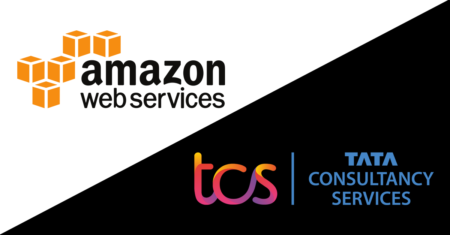In part 1 of this series, I share my thoughts on the growth and proliferation of Artificial Intelligence (AI). AI is being used in many industries, such as marketing to service, and is being used to learn about things and learn about us humans, even learn failure. What does the future hold for AI?Additional sources:Wired source: https://www.wired.com/story/new-artificial-intelligence-mistakes-purpose-chess/ Fortune Business Insights source: https://www.fortunebusinessinsights.com/industry-reports/artificial-intelligence-market-100114 Towards Data Science source: https://towardsdatascience.com/democratization-of-ai-de155f0616b5
Search Results: customer service (3003)
Larry Ellison is reshaping the enterprise-software landscape, renaming Oracle customer-oriented apps from “CX” to “Advertising and CX.”
The expanded Amazon deal with TCS gives AWS more of a presence in the mainframe world it has sought for 15 years to replace.
To put a complex process into simple terms: supply chain management serves as the foundation on which to lay both your offline and online operations.Supply chain challenges, especially ongoing ones, make it tough for businesses to split their focus between addressing those issues and optimizing their e-commerce experiences. As a result, those who already serve buyers online are worried about keeping their customers happy, aware that buyers’ opinion of their suppliers is impacted by the quality and reliability of service and fulfillment.Recent research conducted on the manufacturing industry shows that 98% of manufacturers are already implementing or planning to implement an e-commerce solution. Now is the time to focus on implementing productive solutions geared at tackling manufacturers’ biggest B2B e-commerce supply chain management challenges.
When fiscal Q4 earnings come out on February 25, we’ll be watching to see if the Salesforce growth rate gets back up above 20%.
On the Jan. 27 earnings call, Satya Nadella casually mention that Microsoft’s security business did more than $10 billion in revenue in 2020.
A deeper look into the numbers and marketplace dynamics shows that the $5.6 billion Google Cloud lost actually reflects a strong performance.
GNC Holdings Inc. – a global specialty retailer of health and wellness products – is making big digital strides. In this case study, learn about how GNC is leveraging personalization AI solutions and E-commerce investments to strengthen the customer experience.
I spoke with EVP Clay Magouyrk, the driving force behind the remarkable emergence of Oracle as a serious player in cloud infrastructure.
Hear from Clay Magouyrk, leader of the Oracle Cloud Infrastructure (OCI) business, about the shifting role of “the edge” & more.
Amazon’s AWS cloud unit had an excellent year with revenue of $45.4B, but Microsoft blew past that w/ 2020 commercial cloud revenue of $59.5B.
As ransomware attacks increase in frequency and complexity, businesses need to be on the lookout. Often, data breaches are due to basic and avoidable cybersecurity gaps. Learn how to address existing cybersecurity concerns and respond quicker and more thoroughly against these evolving threats.
Extending its year-long run as the world’s fastest-growing major cloud vendor, Google Cloud Q4 revenue soared to $3.83 billion.
January 2021 saw some major cloud database developments in a fast-moving, fast-growing, customer-demand-driven market.
Qualtrics Chairman Ryan Smith on the wildly creative approach that has enabled his experience-management company to grow so rapidly.
The Digital Acceleration Imperative, Community Transformation Tips, Future-Proofing Receivables with Digital Transformation
During the Microsoft fiscal Q2 earnings call, Satya Nadella and Amy Hood revealed how Microsoft has become the world’s #1 cloud provider.
Q4 financials from IBM show a cloud growth rate of 8%. In the competitive cloud industry, this means they are rapidly falling behind the leaders.
Feb 11 Intro to Power BI by Microsoft StoreSee –> Link to RegisterSee –> Link to Course CatalogMicrosoft Power BI L100*This is an introductory course within Microsoft Business Applications.Prerequisites: Familiaritywith Excel and access to the Power BI Service.Power BI lets you easily unify data from many sources to createinteractive, immersive dashboards and reports that provide actionableinsights and drive business results. This course will provide anoverview Power BI and how its services and applications work together.Objectives:• Understand the building blocks of Power BI• Explore how Power BI can enable confident decisions usinganalytics• Collaborate with Power BI in Microsoft Teams• Connect to a Power BI dataset and begin visualizing data• Save a report within the Power BI service
Feb 11 Intro to Power BI * See — Link to Register * See — Link to Course Catalog Microsoft Power BI L100 *This is an introductory course within Microsoft Business Applications. Prerequisites: Familiarity with Excel and access to Power BI Service. Power BI lets you easily unify data from many sources to createinteractive, immersive dashboards and reports that provide actionableinsights and drive business results. This course will provide anoverview Power BI and how its services and applications work together. Objectives:• Understand the building blocks of Power BI• Explore how Power BI can enable confident decisions usinganalytics• Collaborate with Power BI in Microsoft Teams• Connect to a Power BI dataset and begin visualizing data• Save a report within the Power BI service





















